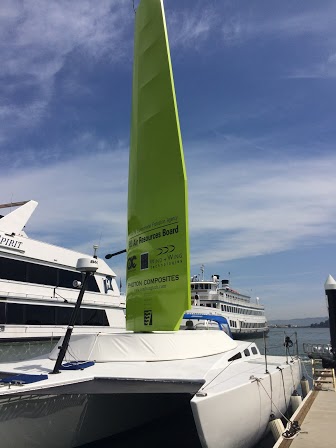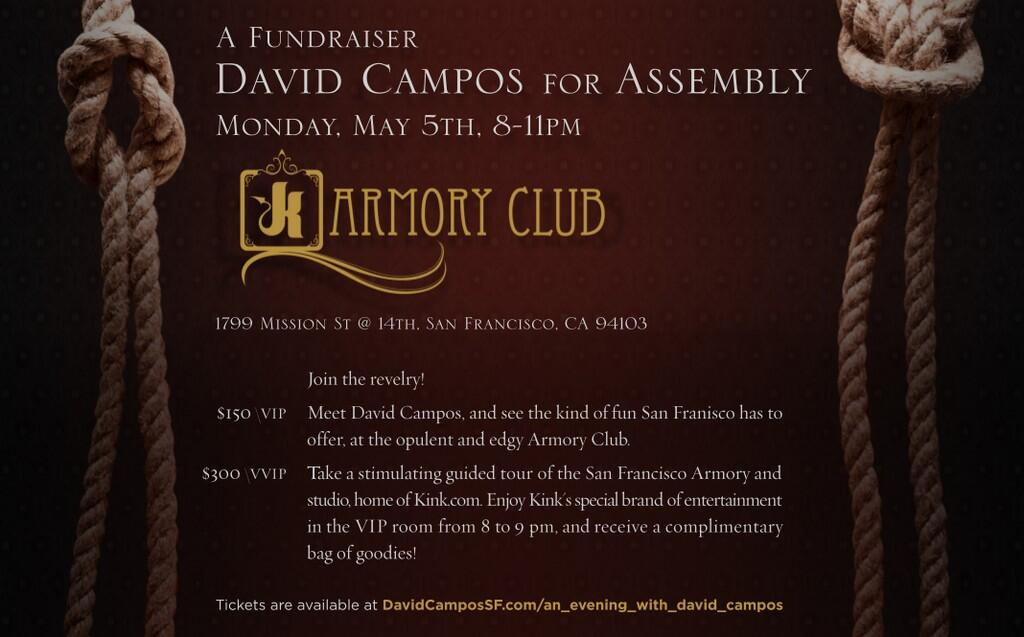Today’s dueling rallies at City Hall on whether to fully ban or fully allow the short-term rentals facilitated by Airbnb and other companies — representing extreme positions on either side of the compromise legislation proposed by Sup. David Chiu — seem to have as much to do with politics as policy.
With thousands of San Francisco apartments converted to rooms for tourists by a company that has flagrantly flouted city laws and a ruling that it should have been collecting and paying the city’s transient occupany tax, Airbnb and its ilk create problems the city must finally address. And after being the only local journalist regularly highlighting this issue for the last two years, it’s good to see people finally paying attention.
But this challenging policy and political issue — how does San Francisco put the Airbnb genie back in the bottle with effective and enforceable limits? — has quickly turned into a circus driven by self-serving stances, big egos, unrealistic grandstanding, half-baked solutions, and hidden political agendas, as we’ve learned by talking to some of the players involved.
So let me walk you through this story from the beginning, including new revelations on the behind-the-scenes machinations in recent weeks, which may have as much to do with Chiu’s race against David Campos for the Assembly District 17 as it does with Airbnb, even though Campos doesn’t appear to have had anything to do with it.
Two years, when I wrote a Guardian cover story entitled “The problem with the sharing economy,” which included information about how most Airbnb hosts were violating city laws against short-term rentals, most of the concerns about Airbnb focused on how it wasn’t paying the city’s transient occupany tax, although Ted Gullicksen and the San Francisco Tenants Union also raised the issue of landlords using the service to remove apartments from the market.
After the Tax Collectors Office ruled that Airbnb and its ilk must collect and pay the TOT, the issue died down until a year later when I discovered Airbnb was simply ignoring the ruling and an annual tax obligation of about $2 million. Around that same time, Chiu started working on legislation to legalize and regulate short-term rentals, but it dragged on and on for more than a year — during which time complaints to the city increased.
But the Mayor’s Office continued to ignore the issue, at least partially because Mayor Ed Lee shared a political benefactor with the company in venture capitalist Ron Conway, and city departments under Lee’s control issued few notices of violation against short-term rentals.
“The enforcement has been lax because there are political forces in Room 200 that do not want that law enforced,” Chiu predecessor Aaron Peskin said at this morning’s rally against the legislation and for stronger city enforcement.
Meanwhile, the City Attorney’s Office was preparing to file lawsuits against a couple of the most egregious short-term landlords and Airbnb began to clean up some of it intransigence, included finally agreeing to pay its taxes starting this summer, so Chiu decided to move quickly to introduce the regulatory legislation to capture the media moment.
“He dusted off a half-finished draft from the last meeting,” was how Gullicksen, who had been involved with crafting the legislation from the beginning, put it to us today.
But Gullicksen is even more critical of this week’s response to legislation that he largely supports, calling for just some minor cleanups. Two weeks ago, during a meeting of the San Francisco Anti-Displacement Coalition, longtime progressive housing activist Calvin Welch suddenly announced that he had crafted competing legislation aimed for the November ballot.
“Calvin said he’d be doing this ballot measure, which is the first that any of us had heard about it,” Gullicksen told us, noting that Welch has resisted working with tenant advocates to cure what Gullicksen said are some extremely problematic aspects of his proposed ballot measure.
Among its problems is it would create a publicly available list of tenants who register to do short-term rentals, which landlords would use to evict such tenants (“He doesn’t really want to protect tenants, he just wants to ban short-term rentals,” Gullicksen said); and with encouraging would-be hosts to rezone their properties commercial or seek a conditional use permit, which could end up diminishing the affordable housing supply.
“The problem with that is even if Planning [Department] gives conditional use approval, its still violates the apartment conversion law,” Gullicksen told us, noting how they violate both housing and planning codes. “The conversion is already illegal twice, and we don’t need to make it illegal again, we just need enforcement.”
Welch hasn’t returned a Guardian call seeking a response to such points, but at this morning’s rally, he issued a full-throated condemnation of short-term rentals and what he says is Chiu’s broad attempt to legalize them.
“It is a backdoor rezoning of every residential neighborhood in San Francisco, and it undermines years of housing advocacy work in San Francisco,” Welch said, accusing Chiu of an “arrogant disregard of established land use procedure in San Francisco.”
But Chiu aide Judson True disputes the characterization that this is a blanket rezoning on residential properties, noting how it limits rentals to just 90 days per year, creates a vehicle for enforcing a law that has been ignored, and that it reins in a practice that has become widespead.
“The idea that the people here don’t want to participate in the legislative process is disturbing,” True told us at this morning’s rally, where he noted a significant part of the crowd were landlords, including one woman who vocally called for means testing for rent control, which tenant groups have long resisted.
Indeed, the unlikely coalition opposing the Chiu legislation includes Janan New of the San Francisco Apartment Association, who said the short-term rentals “will only exacerbate our housing crisis. The practice is detrimental to our existing rent control law.”
Other speakers at the morning rally included UNITE-HERE head Mike Casey, who said competition from Airbnb is hurting hotels and hotel workers, who are being displaced from the city; AIDS Housing Alliance head Brian Basinger, who noted that vulnerable people are being forced from their homes and “the main driver of that is evictions and a lot of those evictions are being done to facilitate illegal hotel conversions;” and Peskin, who said, “The city has to step up enforcement action.”
A couple hours later, Airbnb hosts and other advocates of short-term rentals held a City Hall rally to call for changes in city law to allow short-term rentals with few restrictions. The event was organized partly by Airbnb itself, which sent a message to its customers saying, “At this time, it’s essential that lawmakers hear from not only San Francisco residents, but also from people all over the world who want safe and affordable options when they visit our great city. I hope you’ll make your voice heard now.”
With strong positions on both sides of the question about how to regulate Airbnb and other short-term rentals, it might seem like an issue tailor-made for Chiu and his propensity for getting compromises approved. But it’s also possible that this issue will end up on the fall ballot no matter what, partly because the Campos-Chiu contest will also be on that ballot and it could highlight any missteps that Chiu makes on the issue.
“I do think the Campos-Chiu race may be playing into this,” Gullicksen said.
In fact, he said that the SFTU has tentatively decided to withhold its endorsement in that race and wait until the fall runoff election to endorse, after this legislative fight plays out, which he said Welch and other Campos supporters may be unhappy about. In the meantime, Gullicksen said he’s focused on creating the strongest legislation possible by strengthening the enforcement provisions in Chiu’s legislation and borrowing parts of Welch’s
“What we really want to do is merge the two, so to speak,” Gullicksen said, although he was more critical of Welch’s version, saying “has been kind of rushed, which is problematic” and the “he doesn’t really want to protect tenants, he just wants to ban short-term rentals.”
Peskin told us he had nothing to do with Welch’s plan to introduce a fall ballot measure. Welch told us that he will pursue getting it placed on the ballot by the supervisors, or that he’ll do it by initiative if necessary, but that he does intend to pursue it if Chiu doesn’t drop his legislation, which True says he won’t do.
“It’s a very real possibility, one might even say a probability,” Welch said when asked whether he intends to take him complaints all the way to the ballot. Asked to characterize the main thrust of what it does, he said, “All the measure does is reinstate existing law.”
Then we end up back where we started a year ago, but with some high-profile elections behind us, with a few lonely voices urging the city to enforce the law and put the Airbnb genie back into the bottle.
[UPDATE: Welch got back to us and took issue with Gullicksen’s characterization that he only learned about the legislation a couple weeks ago and wasn’t given a chance to help shape it: “I have no idea why Ted wants to pretend I’m playing hide the ball on this measure.” Welch also said that other tenants advocates support his effort but that “people do not want to break unity with Ted, it’s that simple.”
Welch also said that he directly asked Chiu whether he would reconsider changing the law to allow short-term rentals on residential properties, which Welch considers the starting point for any possible legislative compromise, and Chiu refused. “Everything else is just window dressing. That is the 900-pound gorilla,” Welch said, emphasizing that any relaxing of short-term rentals restrictions on residential property hurts the city.
As for what he hopes to gain with a measure that would reinforce the ban on short-term rentals, rather than trying to legalize and regulate them, Welch told us, “I want to force Airbnb and the other platforms to come forward with a proposal.”]


















